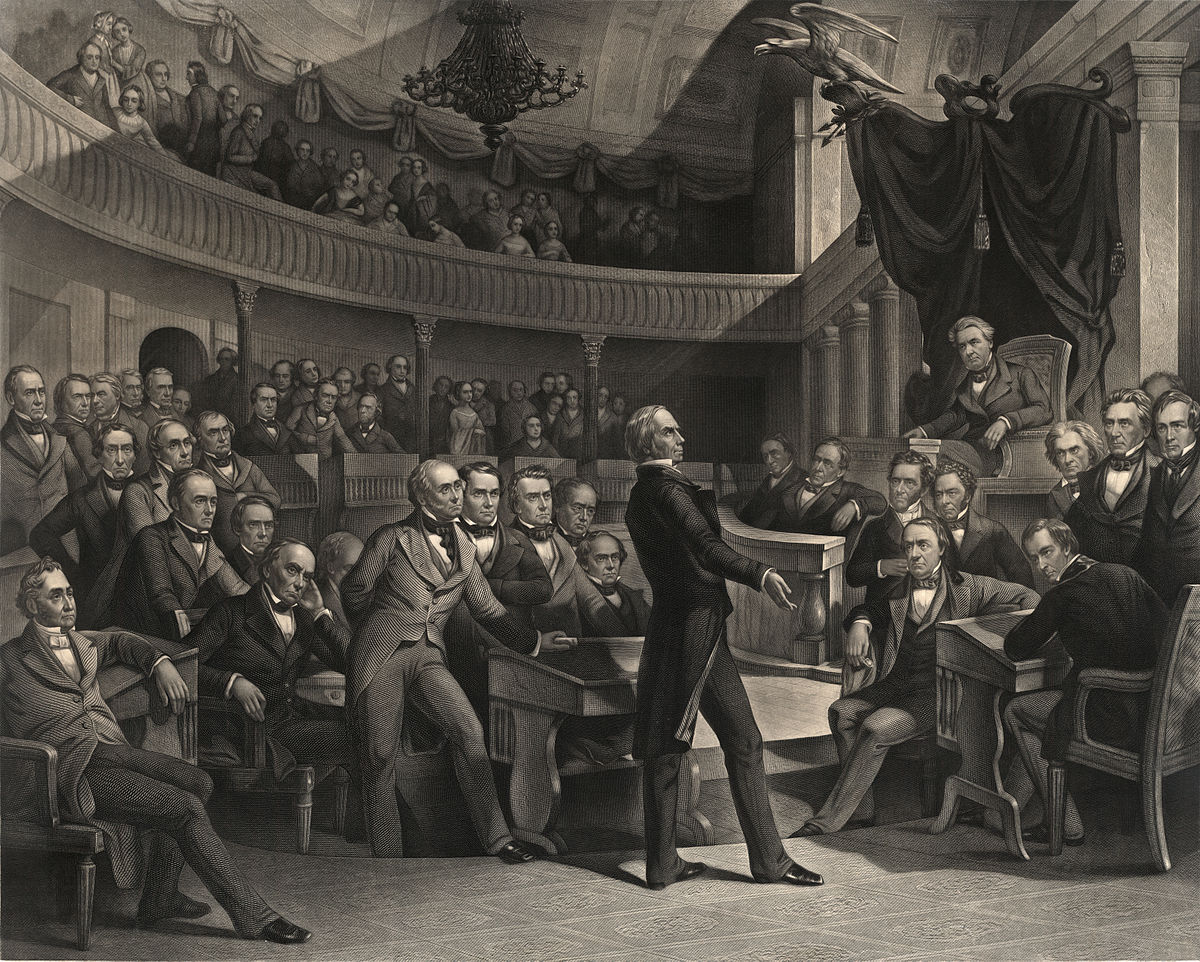
Compromise of 1850
United StatesThe Compromise of 1850 was a package of five separate bills passed by the United States Congress in September 1850 that temporarily defused tensions between slave and free states in the years leading up to the American Civil War. Designed by Whig senator Henry Clay and Democratic senator Stephen A. Douglas, with the support of President Millard Fillmore, the compromise centered around how to handle slavery in recently acquired territories from the Mexican–American War (1846-48).
The component acts:
- approved California’s request to enter the Union as a free state
- strengthened fugitive slave laws with the Fugitive Slave Act of 1850
- banned the slave trade in Washington, D.C. (while still allowing slavery itself there)
- defined northern and western borders for Texas while establishing a territorial government for the Territory of New Mexico, with no restrictions on whether any future state from this territory would be free or slave
- established a territorial government for the Territory of Utah, with no restrictions on whether any future state from this territory would be free or slave
A debate over slavery in the territories had erupted during the Mexican–American War, as many Southerners sought to expand slavery to the newly-acquired lands and many Northerners opposed any such expansion. The debate was further complicated by Texas's claim to all former Mexican territory north and east of the Rio Grande, including areas it had never effectively controlled. The debates over the bill were the most famous in Congressional history, and the divisions devolved into fistfights and drawn guns on the floor of Congress.
Under the compromise, Texas surrendered its claims to present-day New Mexico and other states in return for federal assumption of Texas's public debt. California was admitted as a free state, while the remaining portions of the Mexican Cession were organized into New Mexico Territory and Utah Territory. Under the concept of popular sovereignty, the people of each territory would decide whether or not slavery would be permitted. The compromise also included a more stringent Fugitive Slave Law and banned the slave trade in Washington, D.C. The issue of slavery in the territories would be re-opened by the Kansas–Nebraska Act (1854), but the Compromise of 1850 played a major role in postponing the American Civil War.
